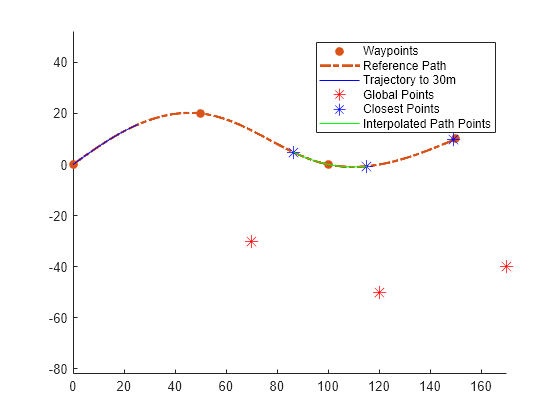interpolate
Interpolate reference path at provided arc lengths
Description
pathPoints = interpolate(refPath,arclengths)
Examples
Input Arguments
Output Arguments
Extended Capabilities
Version History
Introduced in R2020b
